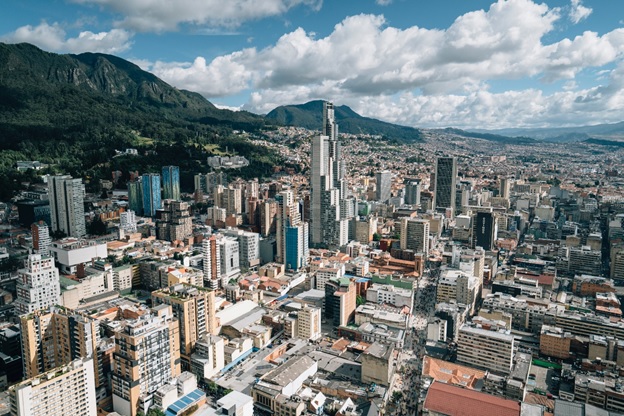
In this blog, Taichi Kato explains Sustainable Development Goals, why they are important for cities and how they can be implemented.
The “Sustainable Development Goals” or “SDGs” for short. You probably have come across this term recently on the news, at school, or perhaps in your workplace. Indeed, an increasing number of local governments have already placed the SDGs at the heart of their core strategies. Many are also looking to incorporate them into future strategies. However, despite their popularity, it seems that many organisations are not entirely sure how to implement these ‘global’ goals into their ‘local’ level strategies.
Therefore, this blog will show some successful examples from international cities to give ideas on how the SDGs may be implemented in your local area. But before that, let’s have a quick recap on what the SDGs are, and why they are important for cities.
What are the Sustainable Development Goals?
The Sustainable Development Goals (SDGs), are the integrated global goals which call for universal action to end poverty, protect the natural environment and secure peace and prosperity by 2030. They were adopted by all UN member states as the core of the 2030 Agenda for Sustainable Development in September 2015.

The framework of the SDGs comprises three layers including:
- 17 global goals, which represent the vision for the ideal sustainable world;
- 169 global targets, which set numerical targets and deadlines to reach the goals; and
- 232 global indicators, which review the progress of SDGs actions against global targets.

In other words, each of the 17 goals has around ten targets, and each target relates to one to three indicators.

This framework has been successful in providing a simplified definition to the ambiguous concept of sustainable development by dividing the concept into smaller components.
Why are the SDGs important for cities?
With the “Leave no one behind” philosophy, the SDGs give a sense of ownership to everyone including national governments of both the “Global North” and the “Global South”, as well as local authorities, private organisations and individual citizens. The important thing to remember here is that until the SDGs index score reaches 100 in any country, all countries are still “developing countries” in terms of sustainable development, and therefore we all need to take actions.
A particularly significant contribution is needed from local authorities because they are the closest organisations to citizens’ lives and are likely to be able to come up with realistic and effective policies which respond to the unique local socio-economic characteristics of each area. It is even suggested that about 65% of the global targets will not be reached if local authorities are not fully engaged. Thus, our capability in achieving the global SDGs is largely dependent on local SDG actions, given the fact that more than half of the world population now live in cities.
How can the SDGs be implemented in your city?
So now we know that local SDGs actions are important, but the key question is: “How can we make it happen?” Urban governance plays a significant role in delivering SDGs actions in the conflicted urban settings where different interests of diverse stakeholders intersect. According to Rydin (2010), a professor at the Bartlett School of Planning at University College London, sustainable urban development can be governed using four approaches:
- Information
- Incentives
- Regulation
- Collaboration
1) Information
A variety of communicative resources can be used to inform local businesses and citizens about the SDGs. Creating an original local SDGs action plan (e.g. Copenhagen’s Action Plan for the SDGs) and setting local SDGs indicators (e.g. “SDG Indicator for Municipalities”) play a significant role in defining the SDGs, showing the progress of local SDGs action against targets, and making current local issues visible to decision-makers. Best practice documentation helps to explain how other cities have approached SDGs, to show what benefits they may bring, and to suggest that change is possible at the local level. Social media be utilised to raise awareness of the SDGs concept amongst citizens and encourage local action (e.g. Kitakyushu City’s Local SDGs Promotion Video).

2) Incentives
Financial incentives, such as tax reduction, loans and subsidies, can be provided to organisations who achieve high sustainability standard in their projects and business practices. This approach is effective in altering the economic power balance in society so that local businesses work proactively to implement SDGs. A good example of these incentives can be found in Bogota, Colombia, where the city’s Smart Specialisation Strategy received funding for its large-scale urban regeneration project to transform the city into a hub for knowledge and innovation. This £20.9 million investment is expected to help boost Colombia’s creative industry and create many jobs, and achieve SDGs 8, 11, and 17.

3) Regulation
Setting the minimum regulatory standards on things like ‘building standards’ and ‘the share of renewable energy’ may not directly encourage SDGs. However, this is still effective in preventing any unsustainable behaviour from happening. For instance, Barcelona’s new solar ordinance, which requires both new and existing buildings to source 60% of its hot water supply from solar energy, has led to a significant increase in buildings with the solar thermal facility and resulted in an approximately 30% reduction in its carbon intensity between 2003 and 2012. This example proves that regulations can also help local authorities build capacity in the market area where they want growth, as Spain has now become one of the world’s leading nations for solar water heating industry, achieving SDG7, SDG9, SDG11 and SDG13.

4) Collaboration
Collaborative action is useful in creating common goals between different actors, sharing resources and scientific expertise, and countering powerful resistance. Networks and partnerships can be established not only locally within cities (e.g. YOKOHAMA SDGs Design Centre, Japan), but also nationally and internationally between cities (e.g. Sustainable Development Solutions Network). Public-Private Partnerships (PPPs) are one of the keys for successful SDGs project, and therefore, are often developed for large infrastructure projects such as energy generation, mass transport, hospitals, and universities.

Summary
- Cities must be at the forefront of actions to tackle complex challenges in the world and achieve the ambiguous, yet achievable SDGs.
- Four urban governance tools can help us achieve these goals:
- Information – increase awareness of the SDGs
- Financial incentives – increase the attractiveness of the SDGs & reduce the initial cost
- Regulation – reduce non-sustainable behaviour & strengthen the sustainable industry
- Collaboration – support each other to make the impossible possible
- Examples from international cities show how the SDGs can be implemented at the local level and prove that changes can be made on a small scale.
- The key for successful implementation of SDGs is not to just copy these examples, but to facilitate discussion with and between your local stakeholders and come up with a localised approach which suits your unique local characteristics.
__________________________________________
This blog was written by Taichi Kato for City-REDI.
Disclaimer:
The views expressed in this analysis post are those of the authors and not necessarily those of City-REDI or the University of Birmingham.
To sign up to our blog mailing list, please click here.
